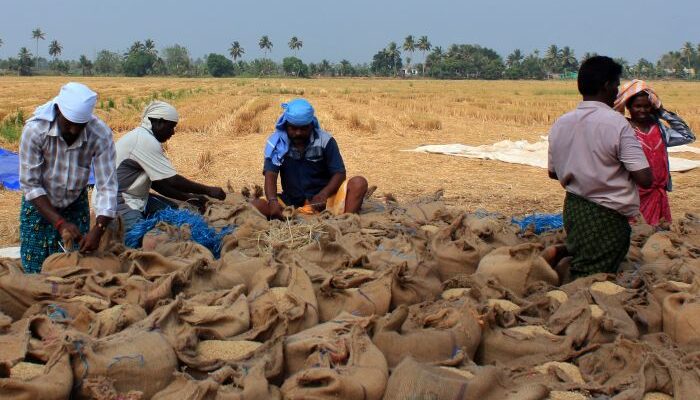The latest FAO Food Outlook, a biannual publication, offers updated forecasts for the production, trade, utilisation, and stocks of major food staples
Rome: The world’s major food commodities are expected to be sufficiently supplied in 2024-25. However, extreme weather, rising geopolitical tensions, sudden policy changes, and other factors could disrupt the delicate balance between global demand and supply, potentially affecting prices and global food security, according to a new report from the Food and Agriculture Organization of the United Nations (FAO).
The latest FAO Food Outlook, a biannual publication, offers updated forecasts for the production, trade, utilisation, and stocks of major food staples
In terms of production, global outputs of rice and oilseeds are anticipated to reach record levels, while wheat and maize outputs are expected to decline slightly. The Food Outlook provides detailed market assessments for wheat, coarse grains, rice, oil-crops, sugar, meat, dairy products, and fisheries.
You may also like to read – Nuclear technologies offer unique tools to set science-based global food safety standards: FAO
The Food Outlook also includes FAO’s preliminary estimate for the global food import bill in 2024, which is projected to rise by 2.5 per cent, exceeding US$2 trillion. This increase is driven by relatively favourable macroeconomic conditions, including steady global economic growth and lower food commodity prices.
This edition of the report features a special chapter on the dynamic effects of shocks to shipping costs on the food import bill—a relevant issue given the conflict-derived volatility on the Black Sea and Red Sea routes, and drought impacts on the Panama Canal. The analysis shows that these shocks have a short-term positive impact on the value of the food import bill, with a more significant effect on net food-importing developing countries (NFIDCs).
Focus on Fertilisers
The FAO Food Outlook also includes a special chapter focusing on fertilisers, offering a comprehensive review of global fertiliser trade between 2021 and 2023, and a short-term market outlook for 2024-25.
This chapter examines a series of shocks, including the war in Ukraine, that have directly or indirectly impacted primary nutrients such as nitrogen, phosphorus, and potassium. Soaring natural gas prices were a major catalyst, making fertiliser production uneconomical, while other factors, including shipping and insurance costs, as well as trade measures, also drove up global fertiliser prices. These shocks led to a significant contraction in fertiliser trade in 2022, with a rebound in 2023 to levels similar to those of 2021.
You may also like to read – Remote Sensing in Agriculture: Keeping Soil Healthy for a Sustainable Future
The report indicates that in April 2024, fertiliser prices, as represented by a basket of nitrogen, phosphorus, and potassium prices, averaged US$327 per tonne, down from US$815 in April 2022. With this price decline, fertiliser trade volumes have rebounded, with nitrogen trade approaching its 2021 level.
Overall, the short-term outlook for fertilisers suggests stability over the next six months, with improved availability and affordability across the three main nutrients. Future shocks to global fertiliser markets are likely to be driven by developments in energy markets due to geopolitical or other causes.




